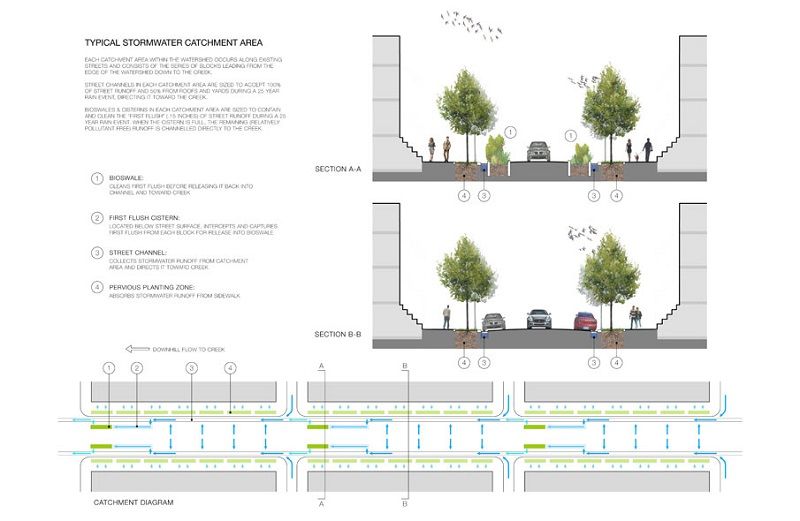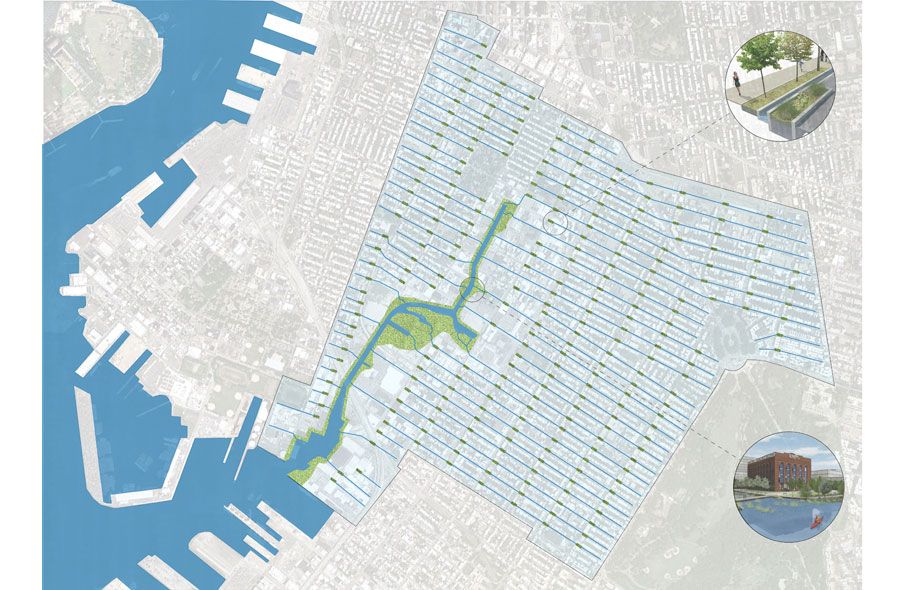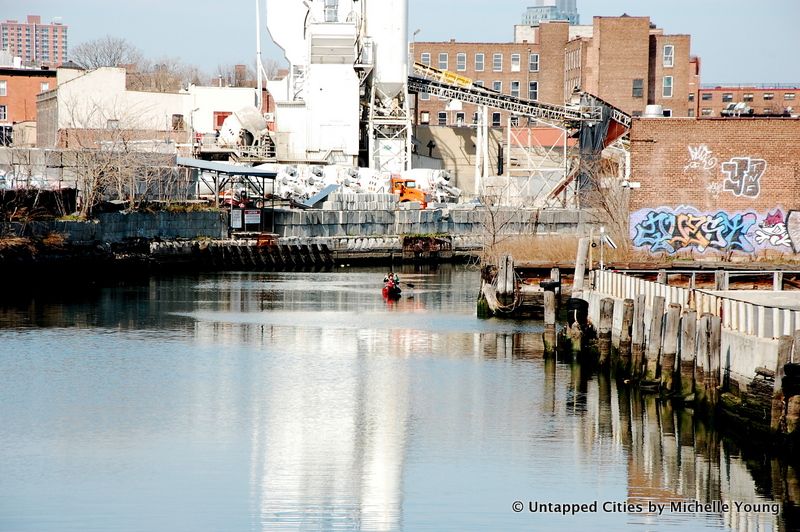Last-Minute NYC Holiday Gift Guide 🎁
We’ve created a holiday gift guide with presents for the intrepid New Yorker that should arrive just in time—



Images: Atema Architecture
With a recent report noting that stormwater runoff and combined sewer overflows (CSOs) continue to pose challenges to New York City’s efforts to clean its waterways, it was timely that architect Ate Atema presented one strategy – the creation of “Street Creeks” – that could help address these problems at last week’s “Cities for Tomorrow” conference hosted by the New York Times.
Older cities, such as New York, are typically served by a combined sewer system, meaning that both wastewater and stormwater runoff are carried in the same pipes to sewage treatment plants before being released into a waterbody. During heavy rain storms the treatment plants cannot process all the sewage and stormwater and as a result some of the flow bypasses the treatment plants and is directly discharged into the waters surrounding the city.
In other words, on rainy days New York is dumping raw sewage and street litter into our rivers, creeks, canals, and bays.
Given the enormous size of the City’s sewer system and amount of rain that falls in a short period time during heavy downpours, the CSO problem cannot be solved by a magic bullet solution. An array of measures are needed to reduce the number and size of CSOs.
It was in that spirit that Ate Atema, a New York-based architect, has developed Street Creeks as a strategy that could help to better manage stormwater runoff in order to reduce CSOs. He initially focused on the Gowanus area of Brooklyn, where new development has increased public awareness about the putrid condition of the Gowanus Canal. That body of water, originally a creek buffeted by marshes, has been subject to decades of CSOs and industrial pollution, resulting in it being designated a Superfund site in 2010.
Industrial pollution is being curtailed and addressed, but new development means more sewage entering local sewers and presents challenges for stormwater management. This raises the possibility of more CSOs like the infamous “Gowanus Poonami” of 2010.

Working with a team of architects and engineers, Atema’s Street Creek concept was tailored for areas such as Gowanus, where streets slope down from higher elevations toward a waterbody. Street Creeks would consist of small trenches cut into roads along the curb line, which stormwater would flow into by gravity and be carried to a waterway or wetland. This would divert stormwater from flowing into the combined sewer system. The water would be filtered through bioswales, which are planted areas specially designed to capture storwmater, a type of green infrastructure the City is already building in some neighborhoods. The concept also includes creating planting strips that would separate the curbs and sidewalks, which would help absorb some stormwater. These features provide the added benefit of greening city streets.

Potential Street Creek network for Gowanus Canal drainage basin
Join us for an upcoming tour of the Secrets of the Gowanus Canal this upcoming Sunday, led by Joseph Alexiou, author of the book Gowanus: Brooklyn’s Curious Canal:
While Gowanus was the original inspiration for the project, Atema notes that CSOs are a problem in over 700 American cities. He and his partners are designing Street Creeks for the City of Newburgh, New York, a Hudson Valley community that also has physical conditions that are well-suited for trying out this new technique. Atema’s team believe that Street Creeks can provide sufficient capacity to process stormwater collecting in local streets and can be implemented at a cost that is competitive with other CSO reduction strategies.
The Rockefeller Foundation has funded the design phase of the Newburgh project and now the project is seeking funding for implementation.
This past Tuesday, Atema presented the concept at the New York Times Cities for Tomorrow Conference (click here for video). This was a parlay focusing on using new technologies and new ideas to help meet the challenges facing cities. In an interview with Untapped Cities, Atema told us that the next steps are building a pilot, hopefully in Newburgh, assessing the results, and moving forward to replicate the concept and other locations.

Gowanus Canal
Next, read about secrets of the Gowanus Canal, an overview of sewage treatment in NYC, and Combined Overflow, an art exhibit about the effects of CSOs on the Gowanus Canal and Newtownn Creek. Contact the author @Jeff_Reuben
Subscribe to our newsletter